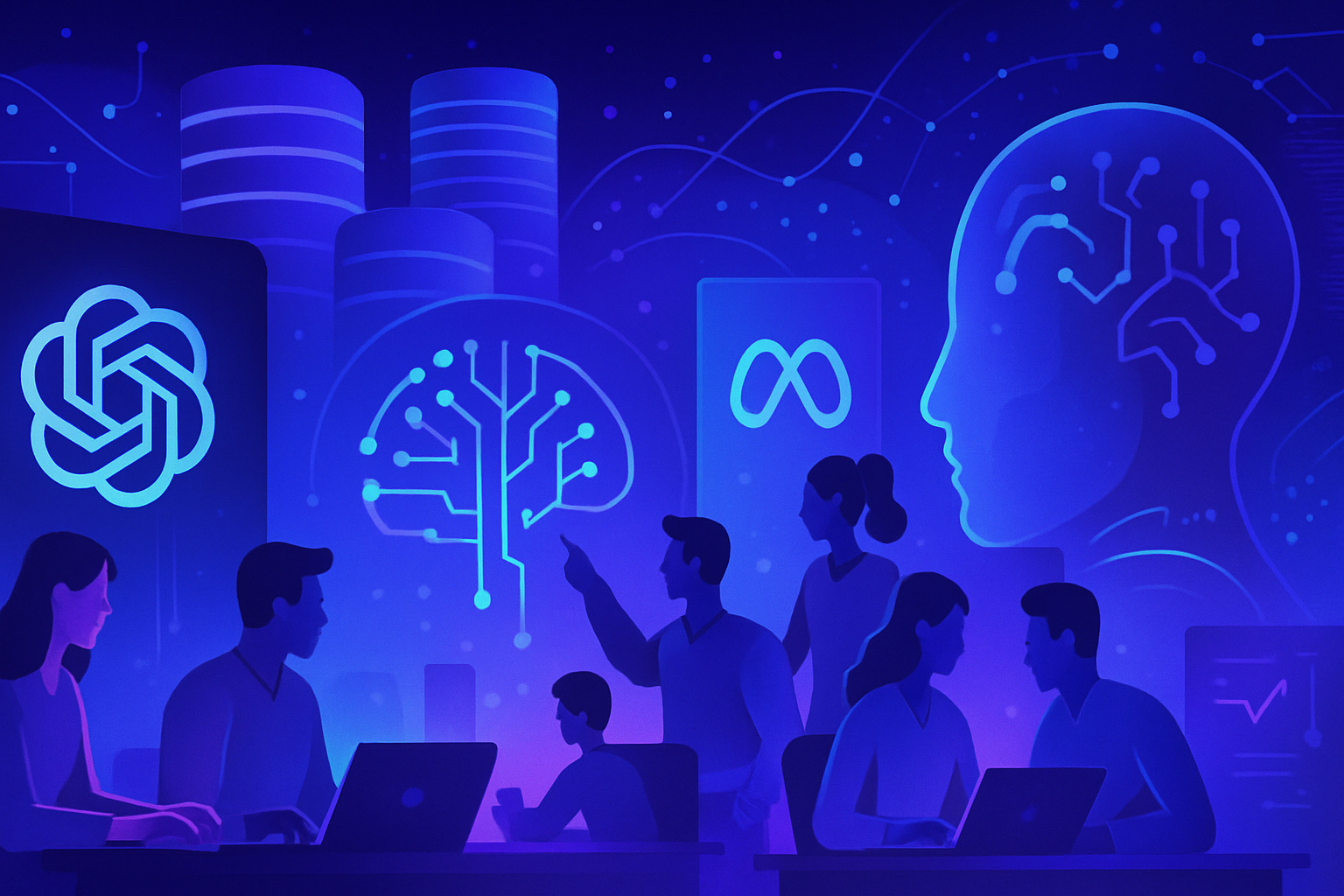Alibaba boldly positions itself in the realm of open source, highlighting a novel vision for artificial intelligence. The company releases over 100 AI models, creating an unprecedented dynamic in the market. This strategic choice responds to the need to stimulate innovation while fostering a community of engaged researchers and developers. In the face of fierce competition, Alibaba establishes itself as a pioneer in this digital era, thus transforming the traditional paradigms of AI.
Alibaba: a shift towards open source
Alibaba recently announced a bold initiative in the artificial intelligence (AI) sector by making over 100 open source models public. This decision aims to enhance its competitiveness against established players such as OpenAI and Meta. These new models, integrated under the name Qwen 2.5, are part of a strategy aimed at promoting collaborative innovation within the developer community.
A massive investment for AI infrastructure
On February 24, 2025, Alibaba unveiled its investment plan of 380 billion yuan (approximately 50 billion euros) over three years, aimed at improving its cloud computing infrastructure and supporting AI development. This approach is set against a backdrop where companies are looking to diversify their offerings to capture the growing demand for AI solutions.
Price reduction and enhanced competitiveness
Faced with increased competition, Alibaba had to adjust its pricing strategy. The performance of DeepSeek, offering highly competitive prices for its AI models, has led to a drastic price reduction at Alibaba, of up to 97% on many AI products. This change reflects a desire to remain relevant in a constantly evolving market.
The impact of open source on innovation
By providing unlimited access to its generative AI models, Alibaba opens a path for researchers, businesses, and developers wishing to leverage this advanced technology. This initiative is part of a broader movement in favor of open source, which sees more and more models outperforming proprietary solutions according to industry experts.
Collaboration and community development
This initiative by Alibaba also aims to stimulate collaboration among the various stakeholders in AI. By releasing open source models, Alibaba hopes to foster an ecosystem where developers can share and mutually improve AI tools. Such an environment conducive to innovation could reform the classic dynamics of the industry, often marked by fierce competition.
A response to the rising challenges of AI
As AI continues to evolve at a breakneck pace, Alibaba’s strategy underscores the need to adapt its offerings. The challenges posed by the field of artificial intelligence, including inequalities in access to advanced technologies, require flexible and accessible solutions. The emphasis on open source may provide a viable response for businesses and developers seeking to engage in this technological revolution.
Future perspectives for Alibaba in AI
With the introduction of its new AI models and sustained investment in open source, Alibaba appears ready to redefine its place in the market. Through this initiative, the company aims to attract a broader user base and strengthen its position against tech giants. Moreover, the success of DeepSeek demonstrates the growing interest in open source models, which are emerging as viable alternatives.
Frequently asked questions
What is the impact of Alibaba’s open source strategy on the AI industry?
Alibaba’s open source strategy is designed to stimulate collaborative innovation, allowing developers and researchers to access advanced AI models, thereby fostering competition and enhancing capabilities across the industry.
How does Alibaba plan to use open source AI models to improve its infrastructure?
Alibaba has announced a massive investment to strengthen its cloud computing infrastructure, aiming to integrate open source AI models to enhance its performance and responsiveness in the market.
What is the WAN 2.1 model launched by Alibaba?
The WAN 2.1 model is an open source AI model from Alibaba that enables video and image generation, providing developers with a platform to create innovative applications without high costs.
How is the tech community reacting to Alibaba’s open source initiative?
The tech community is generally enthusiastic about Alibaba’s initiative, as it opens new opportunities for innovation and collaboration while putting pressure on other industry players to position themselves on open source.
What benefits will the opening of AI models bring to small developers?
The opening of AI models by Alibaba allows small developers to access powerful and cutting-edge tools without prohibitive financial investment, leveling the playing field against large companies.
What distinguishes Alibaba from other companies in its open source approach?
Alibaba stands out for its commitment to releasing a significant number of AI models, its support for the open source community, and its desire to innovate by integrating advanced technologies while fostering a collaborative ecosystem.
What types of AI models has Alibaba made available to the public?
Alibaba has made available more than 100 open source AI models, covering areas such as image generation, video, and advanced algorithms for various applications.
How does this initiative affect development costs for companies?
The availability of open source AI models from Alibaba is likely to significantly reduce development costs by allowing companies to reuse existing technologies rather than building their own solutions from scratch.
What challenges might Alibaba face in adopting an open source strategy?
Alibaba may encounter challenges related to data security management, the need to pay particular attention to the quality and maintenance of available models, as well as increased competition in the AI sector.






